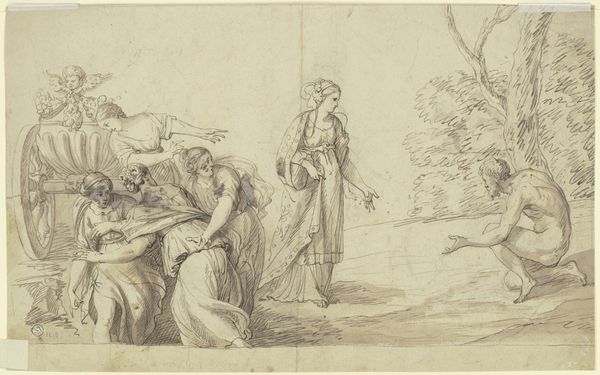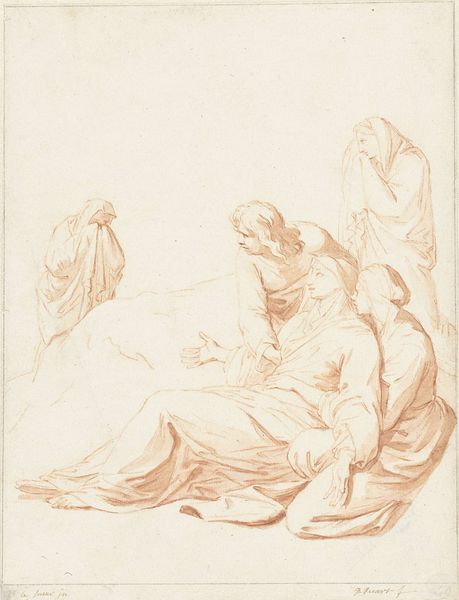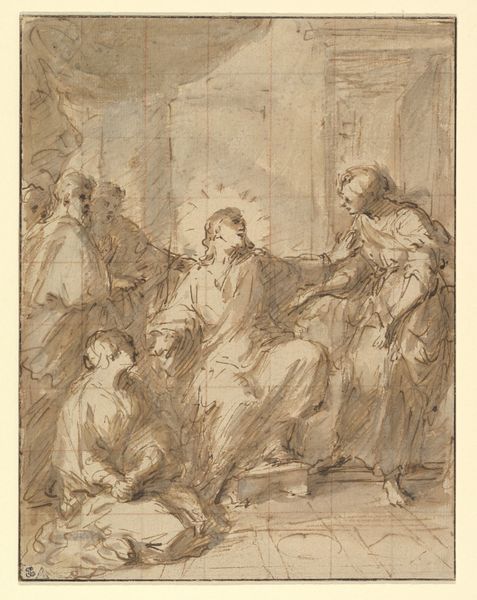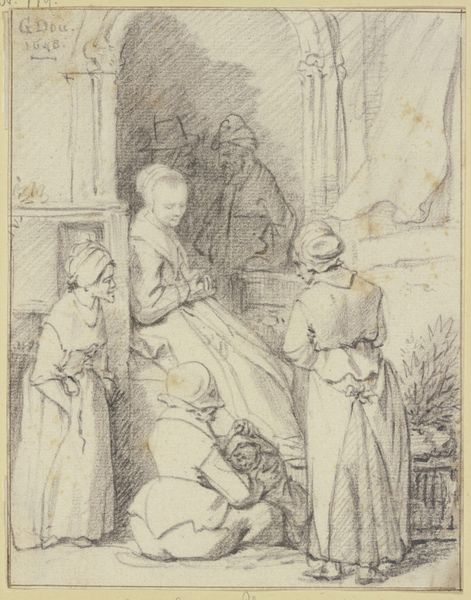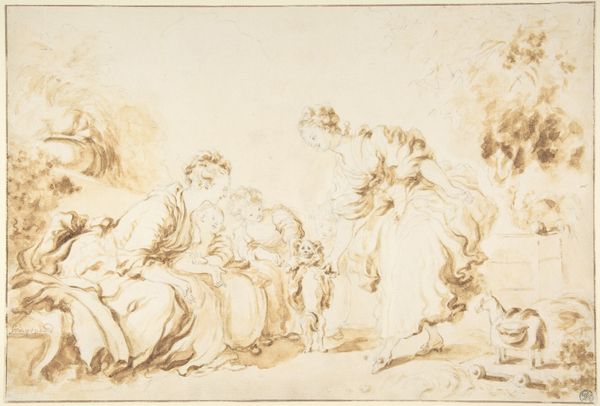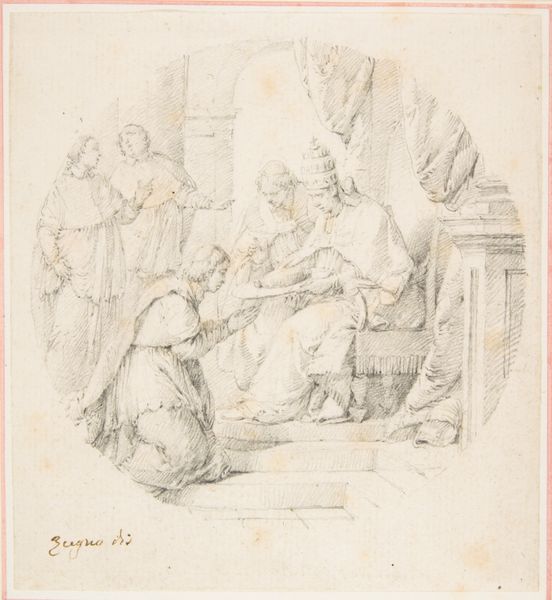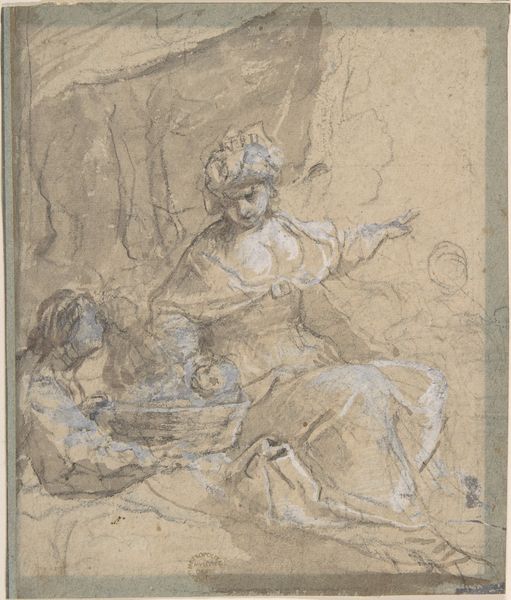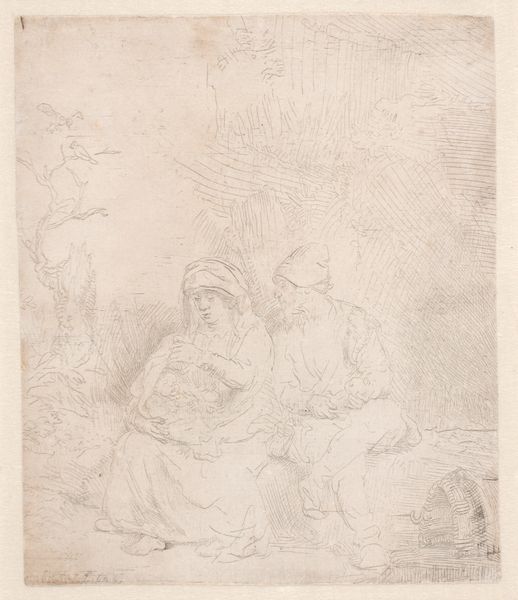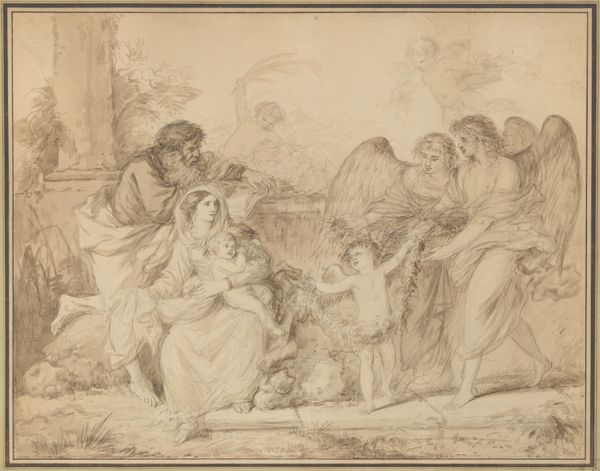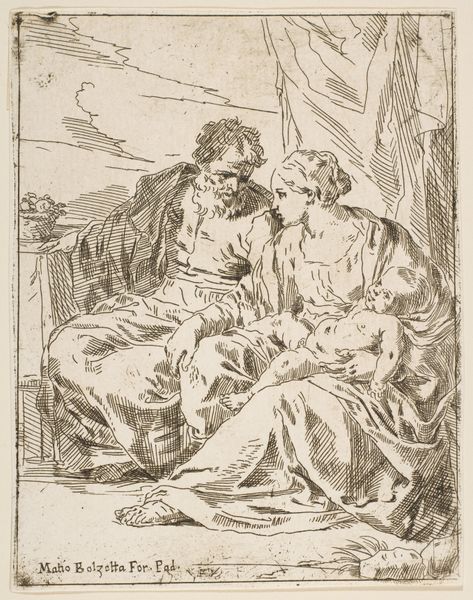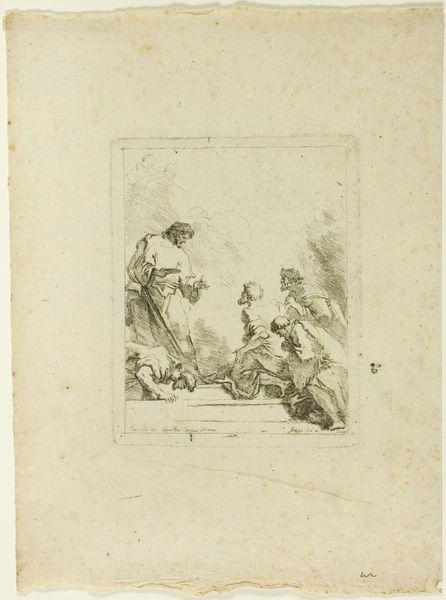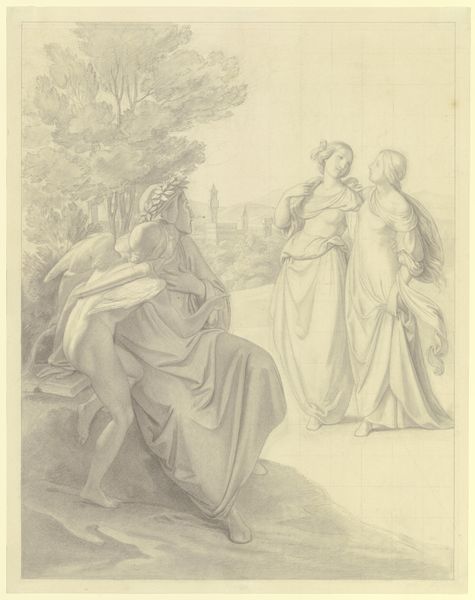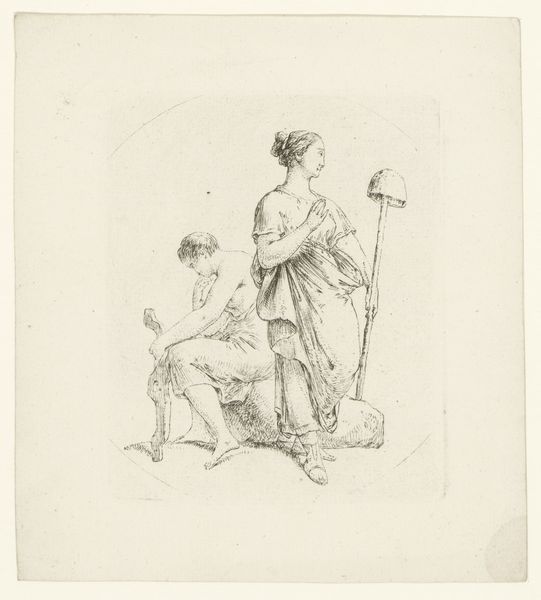
drawing, print, paper, ink, pencil, chalk
#
portrait
#
drawing
# print
#
pencil sketch
#
landscape
#
classical-realism
#
charcoal drawing
#
figuration
#
paper
#
romanesque
#
ink
#
pencil drawing
#
pencil
#
chalk
#
genre-painting
#
history-painting
Dimensions: 311 × 217 mm
Copyright: Public Domain
Curator: This ink, chalk, and pencil drawing, "Moses Saved from the Waters" by Hubert Robert, presents a moment of discovery and deliverance. Editor: My immediate impression is of a somber theatrical set. The wash creates depth, but it also cloaks the scene in an almost mournful light. It feels heavy. Curator: Hubert Robert, working in 18th-century France, often intertwined classical motifs with contemporary social concerns. The biblical story becomes a tableau reflecting themes of motherhood, resilience, and perhaps even anxieties about infant mortality prevalent at the time. What are the class dynamics here? Are those servants who retrieve the basket? And how does the work invite consideration of their lives? Editor: The prominent architectural elements dominate; the figures are almost secondary, arranged around this colossal structure. And that column—a very classical motif indeed—frames them in a specific cultural context. One could also ask: why this story? Why portray the Exodus narrative when other foundational myths from Greco-Roman antiquity might have served similar ideological ends? I suspect this subject had cultural meaning attached, or Hubert may have deliberately chosen it over others because of how Moses’ life maps onto other mythical lives such as Dionysus. Curator: I agree that Robert may have been engaging in the fashionable discourse around antiquity prevalent at the time. Perhaps he saw parallels between the persecution of religious minorities in biblical history and the social injustices of his own era. Remember, the pre-Revolutionary period was characterized by stark inequality, with powerful elites and impoverished masses. Does Moses in the basket reflect this contrast? Editor: Absolutely, and consider how Robert renders water – not as a raging torrent, but a tranquil pool. Water in iconography almost invariably suggests subconscious forces: creativity, mystery, dissolution. And yet this infant is literally taken out of that subconsciousness – he is extracted by his caretakers and lifted into the light. Curator: In viewing this delicate rendering today, we must reflect upon what histories were deemed important enough to record in art. As viewers, we carry our own biases and positionalities into the conversation, informed by the lived experience. Editor: Ultimately, this is a powerful, and potentially troubling work which rewards further consideration. Its visual vocabulary resonates far beyond its surface depiction of a biblical event, revealing timeless human anxieties about identity, social order, and survival.
Comments
No comments
Be the first to comment and join the conversation on the ultimate creative platform.
